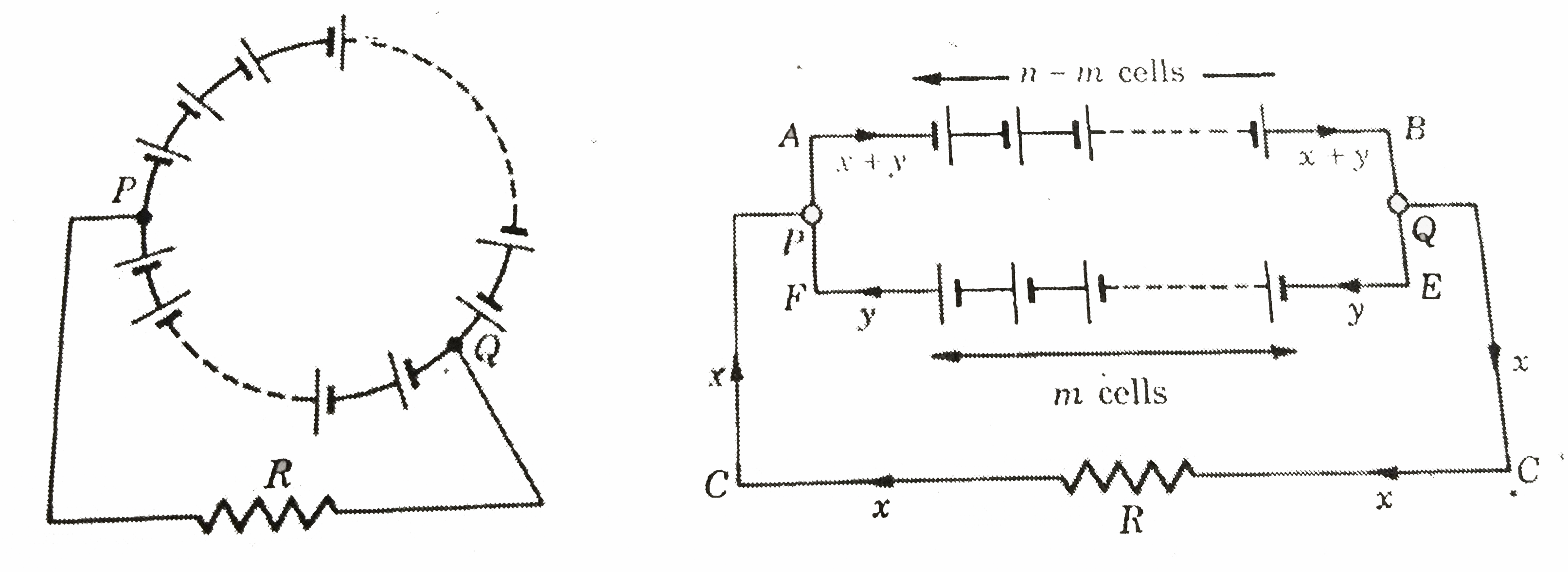n' cells , each of emf 'e' and internal resistance 'r' are connected in a closed circuit so that the positive terminal of a cell is joined to the negative terminal of the next, as shown in figure. Any two points of the circuit are connected by an external resistance R. Find the current in R.

Step by step video & image solution for n' cells , each of emf 'e' and internal resistance 'r' are connected in a closed circuit so that the positive terminal of a cell is joined to the negative terminal of the next, as shown in figure. Any two points of the circuit are connected by an external resistance R. Find the current in R. by Physics experts to help you in doubts & scoring excellent marks in Class 12 exams.
Updated on:21/07/2023Topper's Solved these Questions
- ELECTRICAL INSTRUMENTSBOOK - SL ARORACHAPTER - ELECTRICAL INSTRUMENTSEXERCISE - Problem From competitive examinations
11 Videos
- ELECTRICAL INSTRUMENTSBOOK - SL ARORACHAPTER - ELECTRICAL INSTRUMENTSEXERCISE - Problem for self practice
81 Videos
- ELECTRIC POTENTIAL AND ELECTRIC FLUXBOOK - SL ARORACHAPTER - ELECTRIC POTENTIAL AND ELECTRIC FLUXEXERCISE - Problems for self practive
61 Videos
- ELECTROMAGNETIC INDUCTIONBOOK - SL ARORACHAPTER - ELECTROMAGNETIC INDUCTIONEXERCISE - All Questions
108 Videos
Similar Questions
n' cells , each of emf 'e' and internal resistance 'r' are connected in a closed circuit so that the positive terminal of a cell is joined to the negative terminal of the next, as shown in figure. Any two points of the circuit are connected by an external resistance R. Find the current in R.

View SolutionWhen negative terminal of a cell is connected to the positive terminal of the next cell are said to be in
View Solution
Knowledge Check
Twenty cells each of emf E and internal resistance r are connected in series to form a loop . If polarity of one of the cell is reserved, then terminal potential across this cell is
A19E10B11E10C9E10DZeron identical cells each of emfe and internal resistance r are joined in series so as to form a closed circuit. The P.D. across any one cell is
AzeroBεCε/nDn−1nεAssertion: Two identical cells of emf E and internal resistance r are connected to each other in such a manner that the positive terminal of one is connected to the positive terminal of the other. The net emf of its combination will be E.
Reason: Effective internal resistance of this combination will be r/2AIf both assertion and reason are correct and reason is a correct explanation of the assertionBIf both assertion and reason are correct but reason is not the correct explanation of the assertionCIf assertion is correct but reason is incorrectDIf assertion is incorrect but reason is correct
When negative terminal of a cell is connected to the positive terminal of the next cell are said to be in
View Solutionn-identical cells each of emf E and internal resistance r are connected in series. Find the expression for current in the circuit given below

View Solutionn identical cells, each of emf E and internal resistance r, are joined in series to form a closed circuit. Find the potential difference across any one cell.
View SolutionFour cells, each of emf E and internal resistance r, are connected in series across an external resistance reverse. Then, the current in the external circuit is
View SolutionA cell of e.m. E and internal resistance r is connected across a resistancer. The potential difference between the terminals of the cell must be
View Solution
